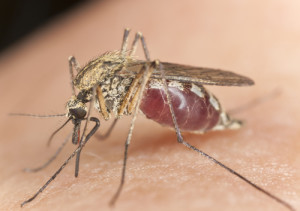Mosquitoes Kill: The deadliest animal on the planet.
Each year, it is estimated mosquitoes transmit diseases to over 700 million people worldwide. Mosquitoes kill an estimated 2.7 million people each year, mostly in Africa, by Malaria. In the 1800’s two outbreaks of yellow fever in the US resulted in the deaths of 20,000 and 40,000 people. We may fear sharks at the beach in warm months. However, the fact is in warm weather more people will die each year from mosquitoes.
Mosquito-borne malaria, dengue and yellow fever are no longer common in the US. The last dengue fever outbreak in the US was in south Texas in 2005. Unfortunately, other countries have not been able to rid themselves of malaria, yellow fever and dengue as we have in the US. There is always a risk of outbreaks occurring in unexpected places and spreading.
One of the reasons for outbreaks re-occurring is how mosquito-borne diseases are transmitted. The hosts mosquitoes may use in their thirst for blood are birds, animals and humans. Mosquitoes themselves may only travel a few hundred meters in their lifetime. The hosts may travel thousands of miles while infected, transmitting the disease to mosquitoes far away.
We may think rural or remote areas provide the greatest exposure to mosquito-borne diseases. Birds, animals and humans are necessary for the transmission of most mosquito-borne diseases. Urban environments have more of all three. They are therefore the ideal environments for disease transmission. In addition, mosquitoes are supreme survivalists. Some scientists believe they are as resilient as cockroaches and could survive nuclear war. Sheer numbers alone make them formidable in many areas.
Mosquito control remains the most effective way to prevent mosquito-borne diseases. DDT, an effective pesticide in mosquito control, was banned in the US in 1972. Since then, other pesticides and repellents were developed. In Asia and Africa, DDT remains the “last line of defense” against deadlier mosquito-borne diseases. These diseases include Japanese encephalitis, Rift Valley fever and Ross River fever.
In a 2002, online article by Seth Borenstein, cited Jonathan Day, a credible mosquito scientist. The article stated Mr. Day and other mosquito specialists were worried that deadlier diseases like Japanese encephalitis, Rift Valley fever and Ross River fever may follow West Nile’s path in the US. Their concern seems valid. One of the most common mosquitoes is the Culex (Asian Tiger) mosquito, which resides in the US. This mosquito has been associated with the transmission of all three deadly diseases.


